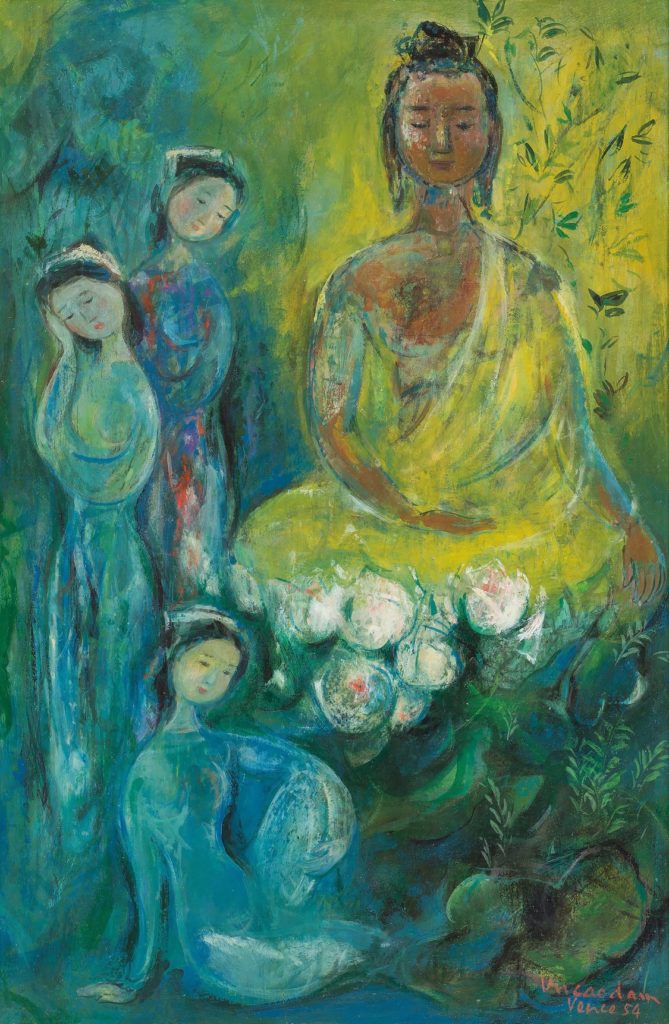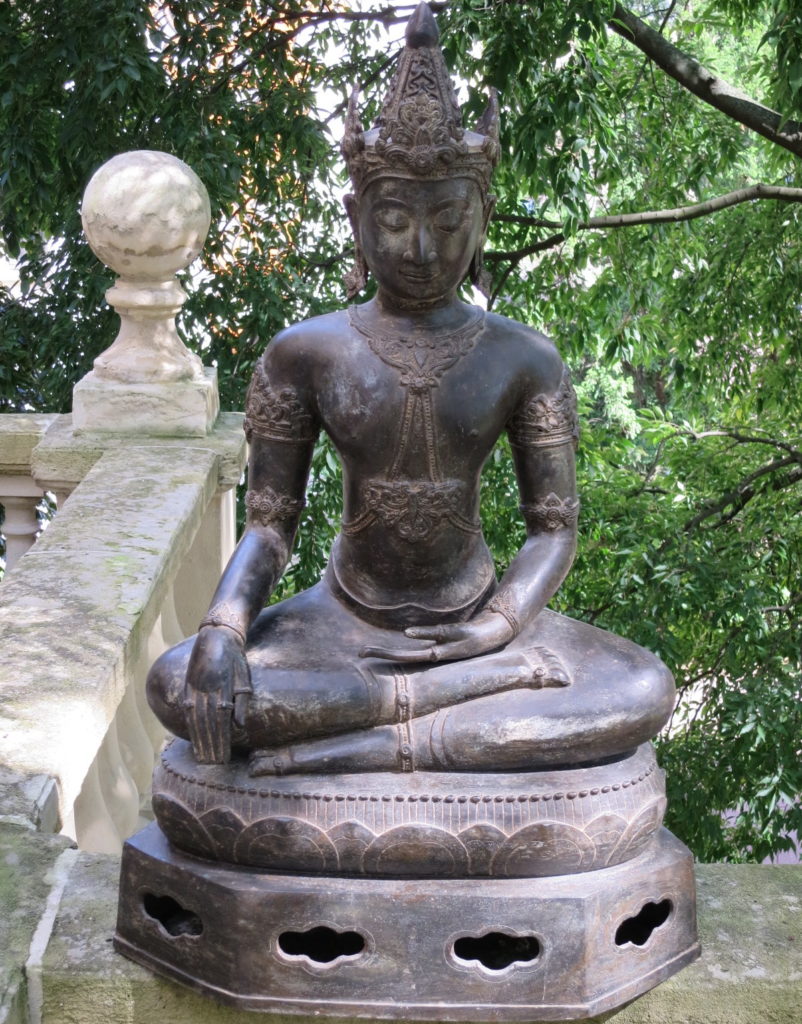Vu Cao Dam – Buddha « The Secularization of Existence »

When Vu Cao Dam created this painting in 1954, he was undergoing a “profound artistic and philosophical mutation” (according to his son Michel Vu).
By then, he had already left Paris for 5 years and was living in Vence, a city in the South of France. He did not see many of his Vietnamese friends, often only when they came to visit him in the South.
However, he developed a passion for the Côte d’Azur’s artistic scene, uncommonly effervescent at the time with the likes and influence of Chagall, Picasso and so many others who filled the place with their talent.


The painting presented here is a particularly successful expression of a pivotal moment in the thinking of the painter who offers a representation of a well-known scene in the history of Buddha when Mara, the tempter, sent his beautiful daughters to charm him even though he was only still Gautama. The answer Buddha made to Mara is widely known, and when asked who would be the witness of his victory, he answered with the gesture of bhumiparçamudra (to evoke the Earth as a witness).
However – and this is what makes the painting so superb – Vu Cao Dam secularizes the scene: if the three young ladies appear seductive, they in fact show very little interest in the Buddha and appear mortal and human.
The representation of the divinity itself maintains the canons of the Buddhist representation (the bhumisparsha mudra, the Buddhist double garment and Lotus flower throne), all this immersed in a quasi oneiric (and therefore not divine) atmosphere where colour and composition take over from the pure iconography. The branches and the leaves of the Bodhi tree swirling on the top right forthrightly confirms this.
In 1954, as shown here, Vu Cao Dam paints beyond the Buddha’s known historical scene, he paints an allegory of deliverance: his own.
Jean-François Hubert